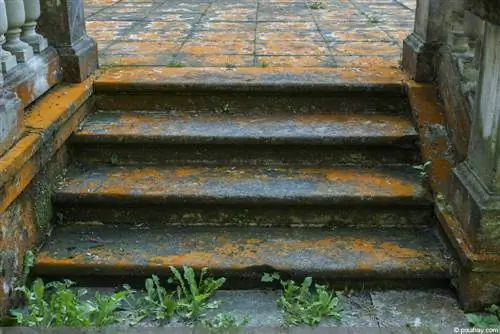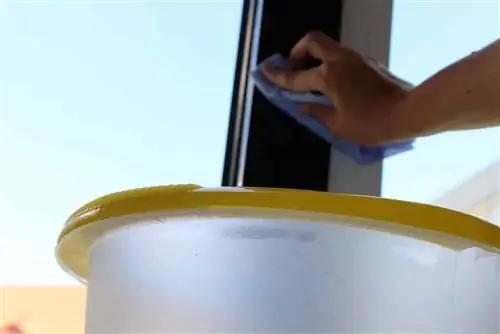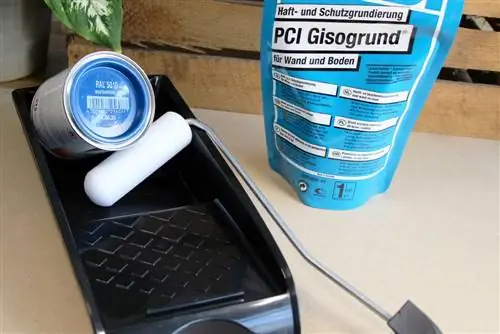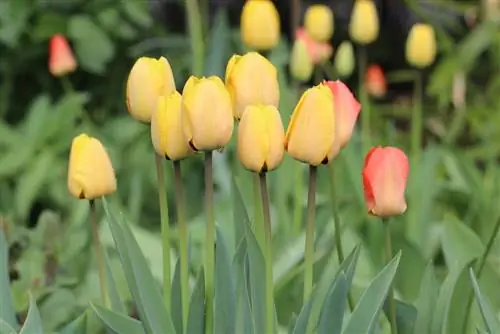- Author admin [email protected].
- Public 2023-12-17 03:39.
- Last modified 2025-01-24 12:45.
Should you ventilate while painting or only after painting? The answer to this question is more complex than expected. This guide shows what determines whether the windows should be open or closed.
Time and temperature
Ideally, painting takes place when the temperatures outside and inside are the same. This makes it much easier to create an optimal climate. In addition, the walls do not show any extreme differences, especially near the windows, which promotes even drying.
If it is significantly warmer or colder outside than inside, the window must remain closed at least while painting. This is especially true if you want to paint wet on wet. Direct and intense sunlight can also be a problem as it heats up the wall at certain points and thus ensures that it dries more quickly. In summer, on the south side or during midday, it makes sense to cover the windows slightly.
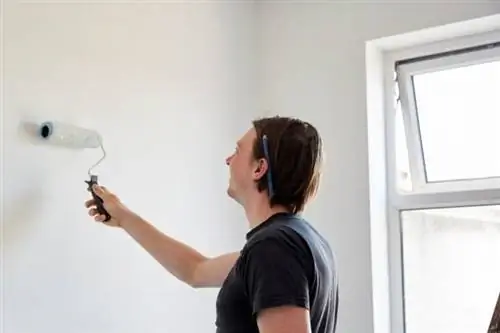
Tip:
If the temperatures are approximately the same, you work quickly and there are no drafts, you can ventilate smaller rooms continuously while painting.
Airing after painting
Water-based wall paint releases moisture into the room air when it dries. If there is no air exchange, this initially condenses on smooth and cooler surfaces. These include, for example:
- Floor
- Window
- Doors
If the humidity is very high, the walls hardly or not dry at all. This is particularly the case if there was no heating beforehand and the outside temperatures are low. To counteract this, the following points are helpful:
- frequent ventilation at short intervals
- Air the room sufficiently before painting
- ventilate from warm to cold
- Create a room temperature of 18 to 20°C
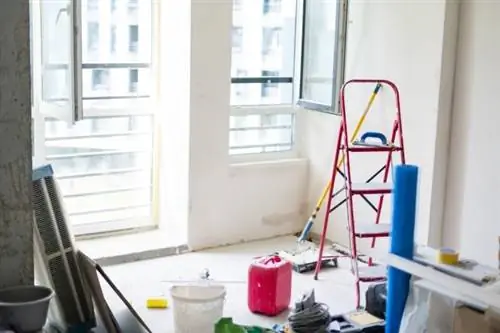
Shock ventilation allows the moist air to escape and does not condense. It is sufficient to ensure a draft by opening windows and doors for a few minutes every two hours.
Tip:
Continuous ventilation after painting is also possible, but is less efficient. For faster air exchange and shorter drying times, it is also recommended to heat slightly. The warm air binds more moisture so that it can escape in larger quantities and for a shorter time when the windows are opened.
Duration of ventilation
How long you should ventilate in short intervals after painting depends on various factors. These include:
- Number of layers
- Type of color
- Size of the room
- Humidity
- Temperature
If it was repainted several times to get even coverage and therefore applied more paint, it takes longer to dry. This is also the case when it is cooler or there is high humidity both in the room itself and outside.
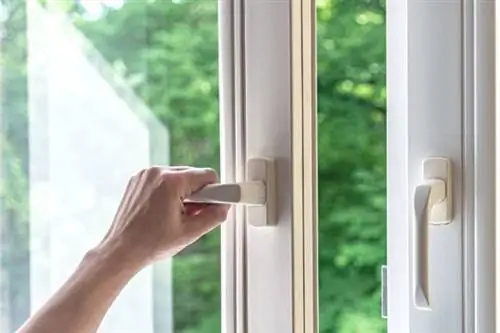
In general, at least during the first 24 hours after painting, you should ventilate for five minutes every two hours.
Frequently asked questions
Can you sleep in a freshly painted room?
The general advice is to first let the paint air out and dry for 24 hours. Although modern remedies are not harmful to he alth, they can still lead to a disturbed night's sleep in sensitive people due to the smell. It is therefore better to ventilate sufficiently and only then use the room again.
How long does wall paint take to dry?
This depends on the type of color, the temperature and the humidity. Most wall paints are considered paintable after four to six hours, dry after twelve hours and fully wearable after 24 hours. However, with a single coat, high temperatures and good ventilation, the paint can dry more quickly.
How to dry wall paint faster?
When time is of the essence, warm and dry air ensures that the wall paint dries and evaporates more quickly. Heating or fan heaters, dehumidifiers or ventilation make the room usable again more quickly after painting. If several coats are necessary to cover completely and evenly, these means and measures will also help.


